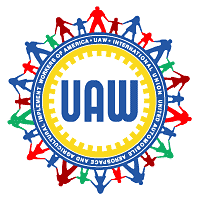

Negotiations between the Big Three auto companies and the United Auto Workers have been underway since the last half of July. UAW locals have scheduled strike authorization votes. A “yes” vote does not automatically mean workers will strike. But when a majority authorizes the union to call a strike if deemed necessary, the members are saying they are willing to fight.
Getting strike approval has never been a problem for the UAW. Workers know when they signal their willingness to walk the picket line, the negotiators can use the strike threat as leverage.
The UAW gained additional potential leverage in 2014, when delegates at its quadrennial Constitutional Convention voted for a dues increase to bolster the strike fund.
The pent-up demands of the rank and file to reverse past concessions are being felt as car sales soar above pre-recession levels. General Motors, Ford and Fiat Chrysler Automobiles are raking in obscene profits. In a mere three months, the combined pre-tax profits of the three companies in North America totaled $6.8 billion — the equivalent of $27.2 billion per year. (Detroit Free Press, Aug. 7) This is almost twice the $15.6 billion that Ford, GM and FCA together made in 2014.
The record profits would be even higher if not for the losses from recall costs at FCA and injury settlements at GM, both caused by company cost cutting at the expense of vehicle safety.
Workers gave, bosses rake it in
In 2009, the companies and the White House Auto Task Force colluded to use the bankruptcy process as a club against the union. Workers were told that if they did not agree to contract modifications in the Loan Service Agreement, the U.S. Treasury would not loan Chrysler and GM the funds needed to avoid going out of business altogether.
The two companies closed more than two dozen plants and warehouses; eliminated annual bonuses, the cost-of-living allowance (COLA), some income protection programs for laid-off workers, and overtime pay after eight hours and on weekends; cut health benefits for retirees, paid break time and holidays; and struck language limiting the use of lower-paid second-tier workers. Workers could now be forced to take a job offer anywhere in the country or lose their jobs. This was on top of concessions in the 2007-2011 agreement that froze wages for four years and introduced two-tier pay for the first time.
That year, the union also agreed not to strike when the agreement expired in 2011 and to submit any unresolved issues for the 2011-2015 contracts to binding arbitration.
In 2011, GM and FCA used the threat of arbitration to coerce workers into accepting the 2009 modifications for another four years. Ford secured similar concessions by offering an attractive bonus package and exploiting workers’ fears that a “no” vote would lead to a long strike, and that they could be permanently replaced by scabs.
In 2007, labor costs were estimated to be less than 10 percent of the price of a vehicle. The concessions that year were expected to cut those costs to a mere 5 percent.
The 2009 bankruptcy concessions, which the 2011-2015 contracts extended, cut wages and benefits further. The workers’ sacrifices have helped the bosses’ profits — hovering around 10 percent for GM and Ford and 7.5 for FCA — exceed the cost of labor. Put in Marxist terms, workers are subjected to a higher rate of exploitation. Of course, the rate is multiplied tenfold in Asian and Latin American plants, where wages are a fraction of what U.S. workers make.
When the second-quarter earnings were announced in July, right around the start of negotiations, the UAW had an opportune moment to make a bold statement: to declare they were going on the offensive to win back the gains of past struggles and secure for the membership a bigger share of the wealth they produce.
Unfortunately the UAW International leaders have tied their hands with their flawed strategy of “partnership” with the corporations. News releases hailed the quarterly profit reports: “We are always happy when the company succeeds,” said International Vice President for Chrysler Department Norwood Jewell. (uaw.org)
Early UAW leaders had a better understanding of what profit is. Vice President Wyndham Mortimer, who negotiated the first contract with GM in 1937, put his Marxist definition of profit in a leaflet that made its way down the Flint assembly line: “It is that part of the corporation’s income that is left over after all charges such as wages, salaries, depreciation, overhead, etc., are paid. This loot will amount to a sum equal to all the wages paid [in the first six months of 1936] to the 200,000 employees of the General Motors Corporation.” (Henry Kraus Collections, Box 8, Folder 40, Archives of Labor and Urban Affairs, Wayne State University)
New rank-and-file leaders are emerging from the shop floor who want to struggle against the profiteers. Many will attend the “Autoworker Speakout” in Detroit on Aug. 23, called by Autoworker Caravan.
May 19, 2025, will mark the 135th birthday of the great Vietnamese leader Ho Chi…
Philadelphia Honoring the 11 people murdered by the state when they dropped a bomb on…
The centennial of the birth of Malcolm X, also known as El-Hajj Malik El-Shabazz, is…
On May 11, which was Mother’s Day this year in the U.S. and several other…
Philadelphia On Mother’s Day 2025, May 11, Families for Ceasefire Philly and over 20 local…
North Philly Peace Park gathering After a federal court hearing on an anti-immigration bill early…